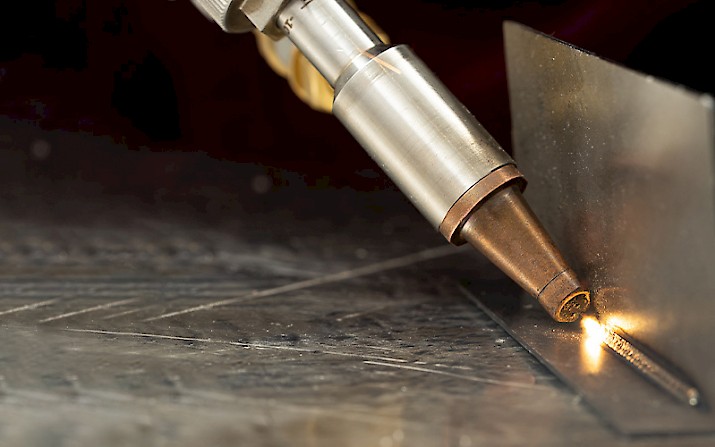
Laser welding, where LASER stands for Light Amplification by Stimulated Emission of Radiation, is a fusion welding process in which metals or thermoplastics are joined using a focused laser beam. It is an advanced soldering process, and has applications in various industries, from aerospace and medical equipment to the production of fine jewellery.
In the laser welding process, a highly concentrated beam of light is focused on the cavity between the materials to be joined. The powerful laser beam liquefies the materials’ edges and fuses them to form a joint. Thanks to the use of such a highly concentrated heat source, laser welding of thin materials can be performed at high speeds. In thicker materials, laser welding can produce deep, tight welds.
The advantages of laser welding are:
-
Speed; the execution speed of the joint is much higher than traditional technologies (about 4 times compared to TIG) and 5000 mm/min can be reached for some applications.
-
Absence of contact; the heat is transmitted by a beam of light so contact between the torch and the material is not necessary, reducing the accessibility problems that sometimes arise due to the size of the torch.
-
High precision; it is possible to concentrate the energy in a small area, melting both sides of the joint even in the case of strong differences in thickness. The total amount of energy transmitted is lower than in TIG and MIG technologies, reducing thermal deformations and the need to include cooling elements in the welding lines.
-
Multi-material: with the same equipment, by adjusting the parameters of the laser, it is possible to weld different materials, including copper and plastic, creating weld joints of different dimensions and depth.
-
Appearance: the aesthetic result of laser welded joints is comparable to that performed by expert TIG welders, but can be performed easily by all operators, and with greater execution speed. If the application permits it, the grinding phase following welding can be omitted, without sacrificing the aesthetic appearance of the product.
Going back to the initial stages of laser welding’s development, we encounter a welding process without filling material, which required an accurate positioning of the joint, with the relative limitations regarding the possible applications. In recent years, this criticality has been mitigated integrating filling materials to laser welding, similarly to what is done in TIG technology, allowing gaps to be filled. This increases the robustness of the process and expands the field of application of this technology.
FAIST Group has been one of the pioneers of laser welding’s application, having it in production since 1996. In 2023 FAIST Industrial plans to further invest in this technology, with the addition of a manual laser welding machine and a completely automated robotic welding station.
The manual welding station will be used for projects with a high product mix characterized by low volumes. In this case, such technology allows the use of specific welding masks, improving the time needed to switch among different products and reducing tooling setup times. These will be fundamental characteristics for products characterized by a very dynamic market which forecasts a high rate of growth, where it is essential to be flexible to keep up with customers’ requests.
Besides the automotive market, another area in which we find important investments, linked to the transition to forms of renewable energy, is that of photovoltaics, a market in which FAIST has been active since 2009. The latest technological evolutions regarding enclosures for PhotoVoltaic Inverters (PVI) are posing various technological challenges, including:
-
High aesthetic quality request
-
The need to weld components with very different thicknesses
-
Rapidly growing demand which can only be met through high welding speeds
These needs have led FAIST Industrial to invest in a new robotic welding cell dedicated to this type of project. The presence of 8 controlled axes allows to reach the joints without the need for multiple placements, while the compact layout guarantees precision with high standards of quality and process reliability. The whole line will be designed to guarantee flexibility and a robust process, and the possibility of working with filling material will allow us to evaluate further applications that can meet the needs of our customers.
Thanks to its high precision, faster processing times, wide material tolerance and consistent quality, laser welding has a wide range of applications and is increasingly going to be used for high-precision welding in FAIST Industrial.



